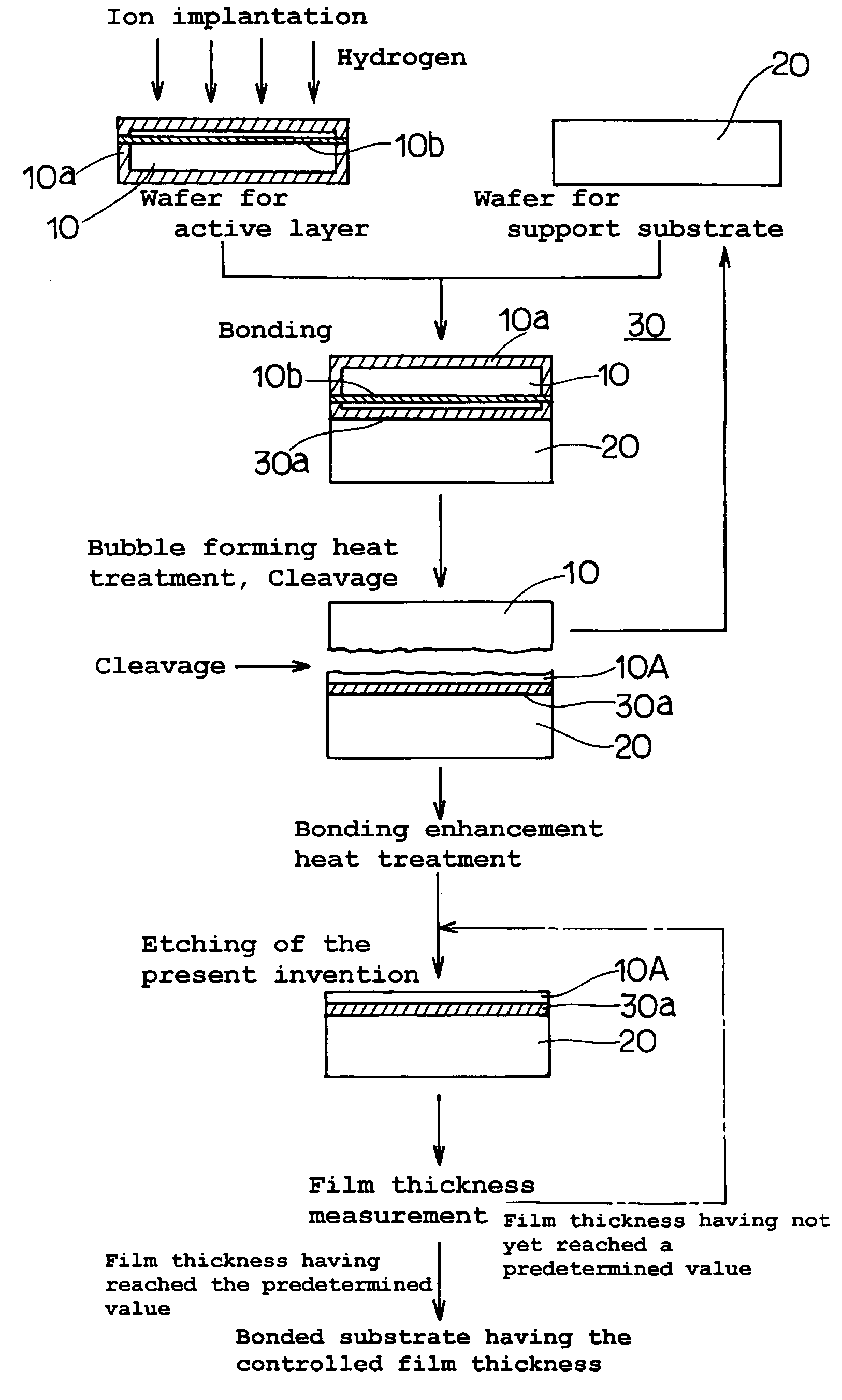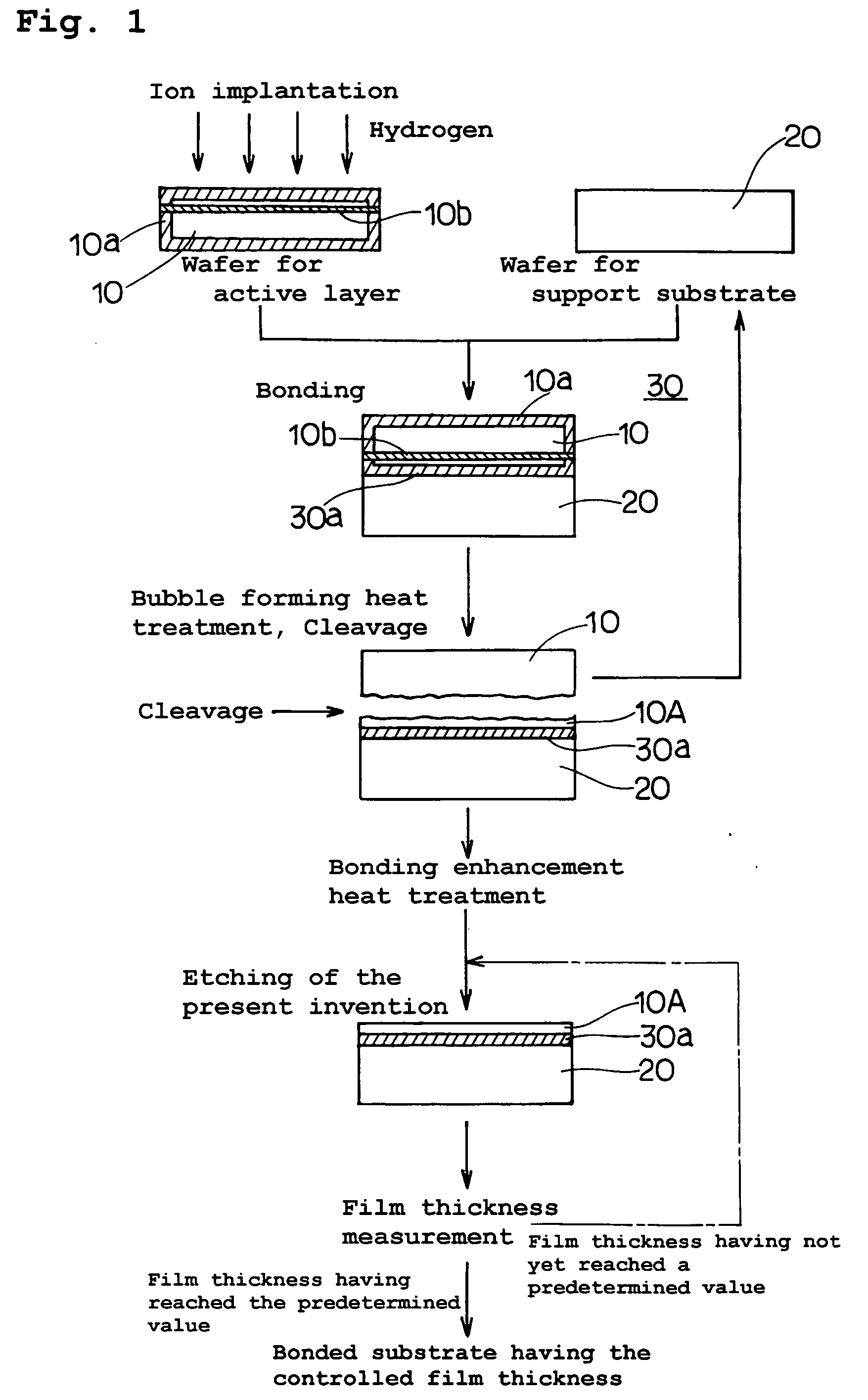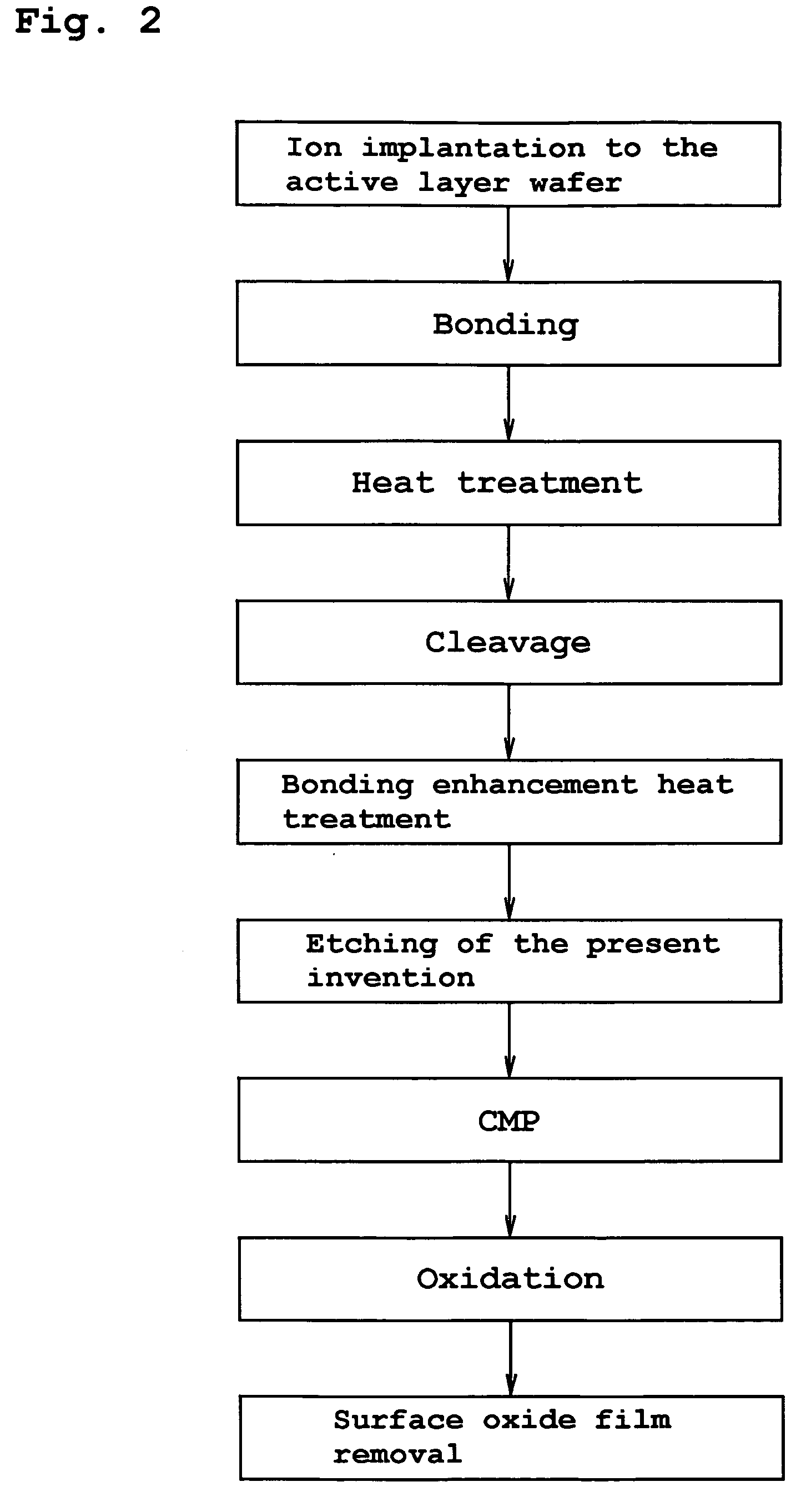Laminated semiconductor substrate process for producing the same
a technology of laminated semiconductor and substrate, which is applied in the direction of semiconductor devices, solid-state devices, basic electric elements, etc., can solve the problems of affecting the production efficiency of the active layer, the roughness of the top surface of the active layer is quite significant, and the delay signal over a wired line has become a critical problem, etc., to achieve the effect of reducing surface roughness, reducing cost and simplifying the process
- Summary
- Abstract
- Description
- Claims
- Application Information
AI Technical Summary
Benefits of technology
Problems solved by technology
Method used
Image
Examples
first embodiment
[0074]FIG. 1 is a flow chart showing a manufacturing method of a bonded substrate (SOI substrate) according to the present invention.
[0075] As shown in FIG. 1, firstly a wafer for active layer (silicon wafer) 10 is prepared by applying to a single-crystal silicon ingot that has been pulled up by the CZ method, each of the processes including slicing, beveling, lapping, etching and polishing so as to form it into a wafer having a thickness of 725 μm and a diameter of 200 mm (8 inches) with one-side or both-sides thereof mirror finished. On the other hand, a wafer for support substrate (silicon wafer) 20 is prepared by using the same manufacturing method as that used for the wafer for active layer 10 so as to be formed into a wafer having the same thickness and the same diameter as the wafer for active layer and a mirror finished surface. The active layer wafer 10 from those two is introduced into a thermal oxidation furnace, where it is treated with the thermal oxidation at 900° C. w...
second embodiment
[0087] the present invention will now be described with reference to FIG. 2.
[0088]FIG. 2 is a flow chart showing a manufacturing method of a bonded substrate (SOI substrate) according to the second embodiment.
[0089] In the second embodiment, following to the same procedure as in the first embodiment, the process begins with the hydrogen ion implantation to the active layer wafer, then goes through the bonding of the active layer wafer with the support substrate wafer, the cleavage heat treatment for the bubble formation in the bonded wafer, the cleaving of the active layer wafer at its portion of the ion-implanted region, and the bonding heat treatment for enhancing the bonding strength of the bonded wafer, and finally provides the etching of the surface of the active layer by a predetermined amount by using the SC-1 cleaning fluid. This embodiment is specific in that subsequently the CMP process, the oxidation and the oxide film removal are sequentially applied to the surface of t...
third embodiment
[0098] the present invention will now be described.
[0099]FIG. 3 is a flow chart showing a manufacturing method of a bonded substrate (SOI substrate) according to the third embodiment of the present invention.
[0100] In this embodiment, following to the same procedure as in the second embodiment, the process begins with the hydrogen ion implantation into the active layer wafer, then goes through the bonding of the active layer wafer with the support substrate wafer, the heat treatment for the bubble formation in the bonded wafer, the cleaving of the active layer wafer at its portion of the ion-implanted region, and the bonding heat treatment for enhancing the bonding strength of the bonded wafer, and finally provides the etching of the surface of the active layer by using the SC-1 cleaning fluid. This embodiment is specific in that subsequently the oxidation and the oxide film removal are sequentially applied to the surface of the active layer.
[0101] In this case, the surface roughn...
PUM
| Property | Measurement | Unit |
|---|---|---|
| thickness | aaaaa | aaaaa |
| thickness | aaaaa | aaaaa |
| pH | aaaaa | aaaaa |
Abstract
Description
Claims
Application Information
 Login to View More
Login to View More - R&D
- Intellectual Property
- Life Sciences
- Materials
- Tech Scout
- Unparalleled Data Quality
- Higher Quality Content
- 60% Fewer Hallucinations
Browse by: Latest US Patents, China's latest patents, Technical Efficacy Thesaurus, Application Domain, Technology Topic, Popular Technical Reports.
© 2025 PatSnap. All rights reserved.Legal|Privacy policy|Modern Slavery Act Transparency Statement|Sitemap|About US| Contact US: help@patsnap.com



